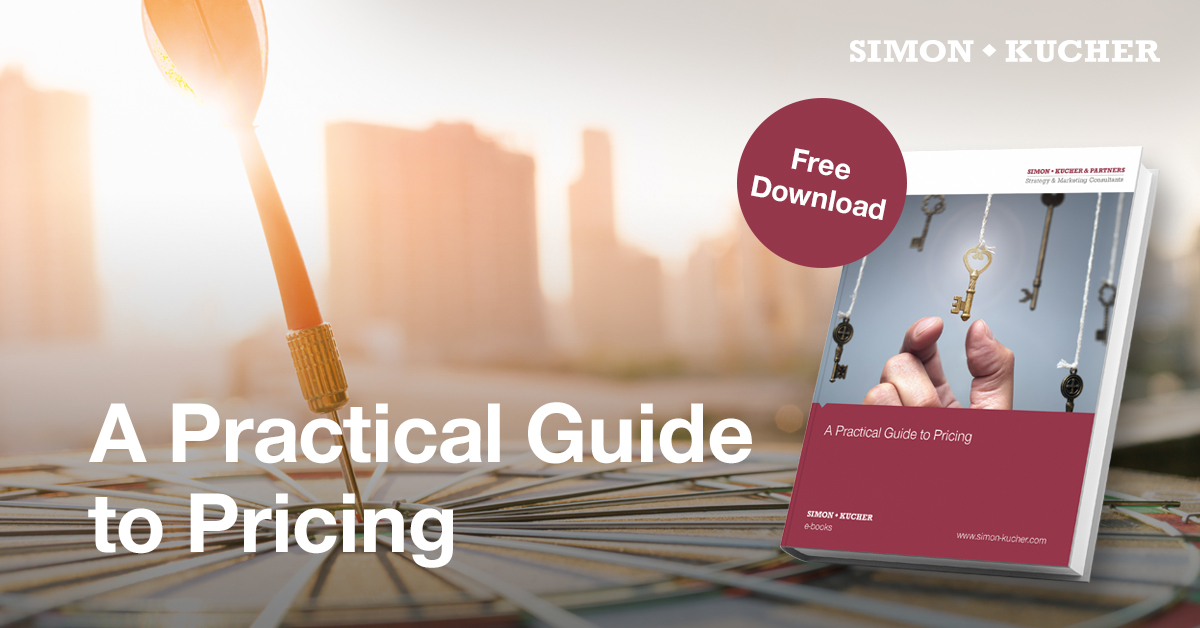All new hit innovations need a winning price. But having never priced the product before, how do companies know what to put on the price tag? In part 8 of our Pricing Basics series, Jan Haemer discusses conditions and success factors in deciding between two pricing strategies for new products: Skimming and penetration pricing.
Determining the right pricing strategy is an especially challenging aspect of launching a new product or service. You have to set prices for the first time, and this price reveals a lot about your product. Many companies fall into the trap of leaving the price decision to last minute, with almost no time for analysis or research.
A high price creates a sense of premium or exclusivity around the product, whereas a low price might aim at luring customers from potential competitors. Defining the pricing strategy essentially determines the economics of the product’s entire lifecycle. It boils down to a choice between two strategies: Skimming or penetration pricing.

Skimming or penetration pricing?
Skimming means to gradually skim the layers of “cream” from the market. Apple is a prime example of a company following this strategy. With skimming, your prices are set high to maximize profits in the short term by targeting the customers most interested in your product. In the beginning, you make less but more profitable sales because only early and eager buyers are willing to pay more. Then, the price is steadily reduced over time to attract customers on a budget, who are happy to buy your highly esteemed product for a “bargain”.
In contrast, penetration pricing means you offer a low price to attract many customers. Amazon, Facebook, and Uber are well-known examples here, where network effects dominate the market. They rapidly penetrate the market, bring down unit costs, build up a loyal customer base, and create barriers to entry. The high volume compensates for thin unit margins. If you gain many customers early on in such markets, you are better positioned to maximize customer lifetime value from future sales and upsells.
We have seen many companies, including Silicon Valley firms, fail with a penetration pricing strategy. It is risky from a profit standpoint. You need to be able to follow through on future price increases planned when deciding to pursue this strategy. Often, too little attention is paid to mid-term monetization routes, or how companies will ultimately make money.
A penetration or skimming strategy for your innovation will only make sense under certain conditions. Here are five points for making an informed decision:
- Type of innovation: Breakthrough or just me-too?
Think of the case of Maglev magnetic trains, first patented about 60 years ago. With such a unique, proprietary solution there is neither a reference price nor direct competition. Your goal is to create a market and penetrate it. Undifferentiated “me-too” products face many competitors. Samsung chose a penetration strategy in the smartphone market to catch up with competitors and failed. Only if your offering delivers superior value do you have the foundation to further evaluate a skimming strategy. - Goals: Margin or share?
Revenue, market share, total profit, profit margin, customer lifetime value, average revenue per unit, or something else? Clearly, you cannot maximize all of these goals at the same time. You must make trade-offs. Some companies have production capacity constraints during the launch phase and target a mass production for the future. Some industries with high CAPEX requirements need to meet cash flow targets. Often such industries follow a penetration strategy as a “safe bet” and forego skimming options. - Price sensitivity: High or low?
When a low price translates into significantly higher volume or a larger number of customers (high price elasticity), penetration pricing can work. However, the market must be sensitive enough to compensate for the lower margin. Skimming makes sense when demand shows low price elasticity. It is wiser to prepare for low volume and ensure profits through a high price until your product secures a market position. - Customer segments: Just one or many?
Some customers do not want to wait for a new product to become mainstream. They want to show off their newest tech gadgets to their peers. Likewise, B2B companies want to use state-of-the-art technology to gain a competitive advantage. In both cases, early adopters might be willing to pay more than late followers. The more the willingness to pay differs between segments, the more appropriate a skimming strategy becomes. The same is true if deeply entrenched competitors entail a risk of triggering a price war with your new product. - Product portfolio: Isolated or dependent?
There are situations where a new product cannot be launched in isolation from the rest of your portfolio. You need to consider portfolio and cannibalization effects. A way to implement skimming is by combining product and pricing measures. Take the example of Porsche’s four-door car, the Panamera. First, the high-end eight-cylinder model served to skim the market, before the six-cylinder model was released a year later at a lower price. You might also add premium products on top of your standard offering as an alternative, done for example by a plastics supplier. Due to the EU’s agreement to ban single-use plastic, demand for “green products” increased. They charged a premium for the additional value delivered by their new green product range on top of their standard product, but provided their customers with a choice. This skims profits from environmentally conscious customers, but price sensitive customers could still buy the cheaper standard material.
The above conditions show that choosing between a skimming or penetration pricing strategy depends on your situation. In the end, it boils down to a management decision based on a trade-off between volume and profit targets. This is a tough call. Based on experience, the following five steps can help you to decide the right price strategy for new products:
- Start early enough:
Plan time to define the right strategy for your innovation. Companies that continuously consider pricing from the start of product development are twice as successful in monetization as the rest. - Document internal assumptions:
Use the right internal experts to consolidate and challenge available market intelligence and customer insights. Organizations own huge internal knowledge, but it is rarely coordinated or shared within the company. - Include the voice of the customer:
Allow for external validation by integrating value assessments and acceptance tests on product and prices. - Build a robust business case:
Apply proven methodologies to estimate price/value elasticity, quantify cannibalization risks, and run scenario analyses on the potential competitor reaction. - Decide and stay firm with your decision:
Too many companies still go for a penetration strategy as the easy option.
Whether you choose a penetration or skimming pricing strategy determines the economics of your product’s entire lifecycle. It is a decision that decides the success or failure of a new product. You have one shot. Make sure you get it right.
Enjoyed reading our article? Good news: This popular series is available as A Practical Guide to Pricing! Download our free eBook now and learn how to achieve a sustainable, competitive advantage through pricing!
Read more from our expert blog series Pricing Basics:
Part 1: The Importance of Pricing
Part 2: Pricing Power, and How You Can Profit From It
Part 3: Why Prices End in 99… and Other Psychological Pricing Tactics
Part 4: Value Pricing Changes the Rules of the Game
Part 5: Digital Transformation – A New Way of Working
Part 6: Price increase? No problem. Preparation beats price pressure!









